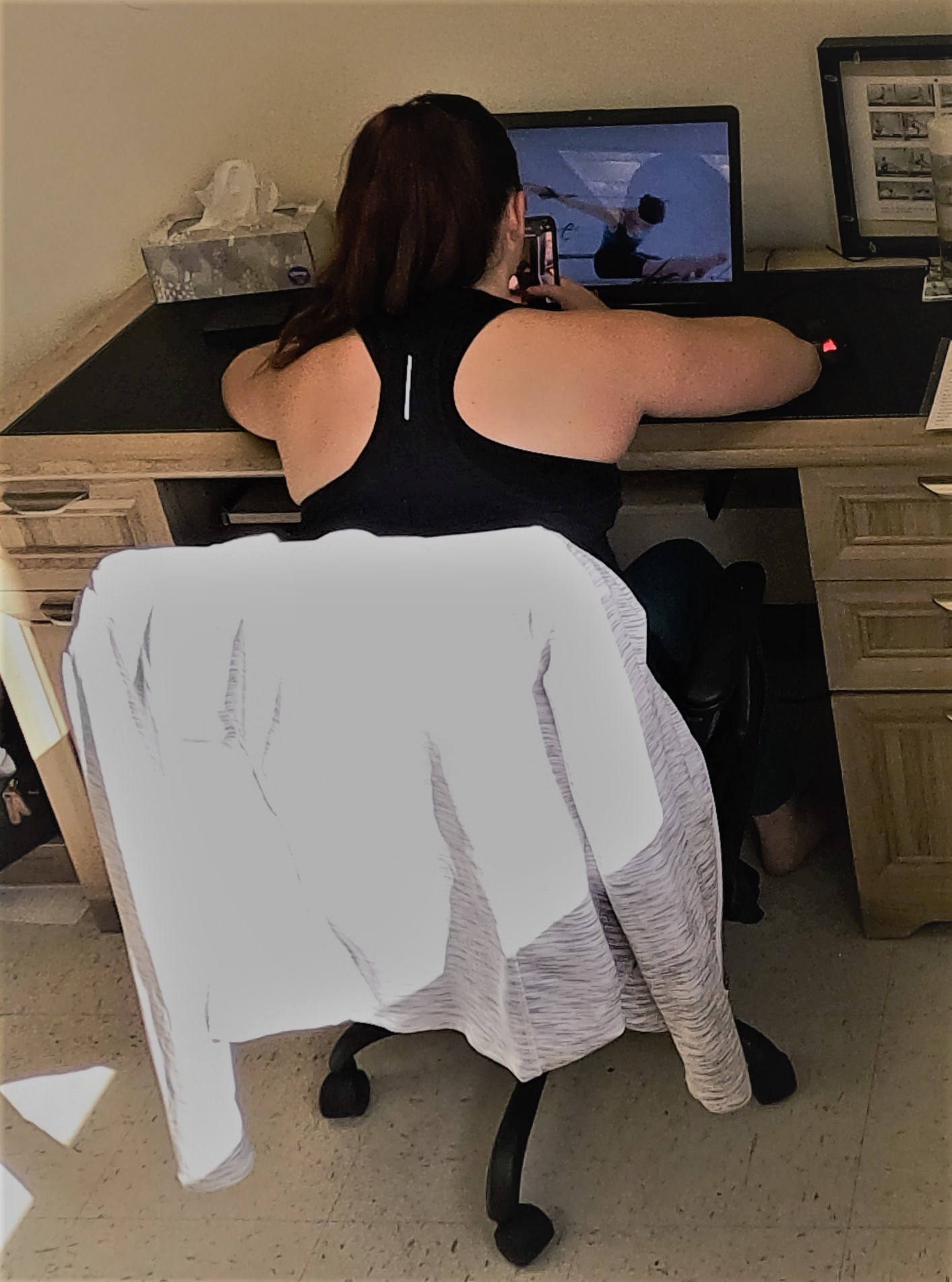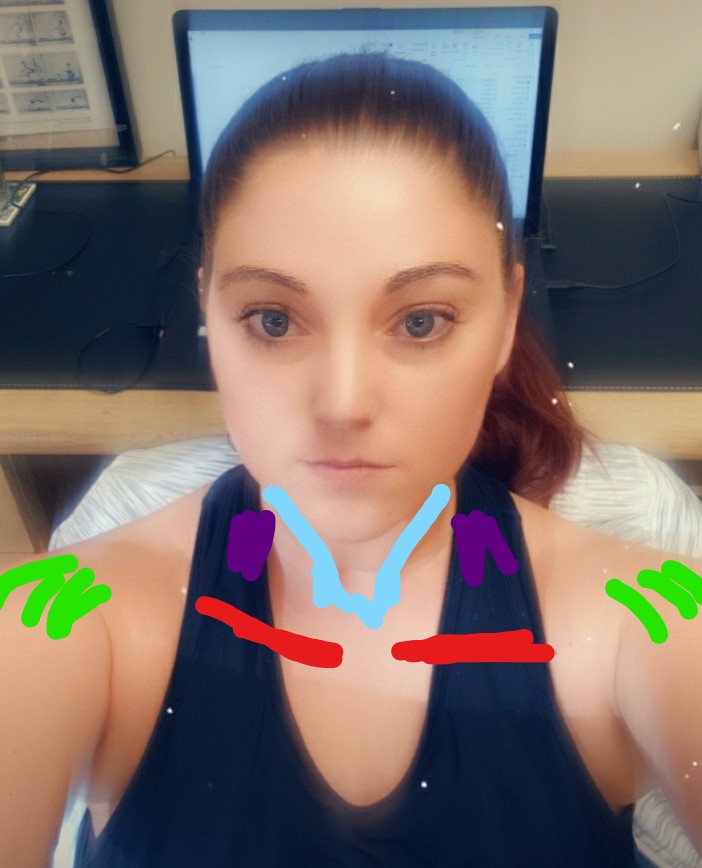
Let’s Talk “Tech Neck”
An interesting side effect of our current state is a change in posture, an increase in headaches, a decrease in shoulder mobility, and difficulty rotating through the thoracic spine. Have you noticed it? The change may have been subtle – is it harder to check your blind spots when your driving? Or maybe it hit you like a ton of bricks – shoulder pain anyone?
Why is this occurring? A combination of inactivity, paired with more computer/phone/television time causes a posture something like this:

When the body spends time in this position the following muscles may become shortened:
- Pectoralis
- Deltoid
- Sternocleidomastoid muscle (SCM)
- Scalene muscles

Shortened muscles are usually “high tone”, or tight. A tight muscle is a difunctional muscle but does not tell us if the muscle is strong or weak. High tone muscles are the first indicator that there may be a problem needing addressed. High tone muscle paired with pain in the muscle or connecting joint is a red flag we should investigate further.
When a muscle is shortened it is difficult for appropriate blood flow to reach our muscles, fascia, and other tissues. Limited blood flow can result in “dehydrated” tissues resulting in knots, scar tissue, or “frozen” syndromes. Once tissue has become “dehydrated” it may require assistance to rehydrate the tissues through practices such as: massage therapy, foam rolling, vibration technology, cupping, heat therapy. There are many more options for soft tissue manipulation, but you get the idea.
So, what could you do at home to combat “tech neck”?
- Get moving! The more you stand up, change positions, and just get moving the more mobile you will become and stay. Try to stand up or stretch your shoulders/neck every 30-45 minutes whenever possible. It can be a short time period (1-2 minutes of movement has shown to make an impact on the body when completed frequently throughout the day).
- Learn to stretch.
- Find an exercise program that takes into consideration your lifestyle needs. If you are experiencing limited chest mobility your exercise program should assist in stretching and strengthening the body in a healthier position for the shoulders and chest. Or if you haven’t changed your exercise programming in awhile it may be time to reevaluate what your body needs.
- If you are in pain, seek out a movement or soft tissue professional to assess the best plan of action to get you back to living pain free. A good movement or soft tissue professional should be able to provide homework to be done outside of your session as well as a reassessment protocol to know you are seeing results (keep in mind, some reassessment tools may be based on how you feel and not data driven – these are sometimes the most useful assessments).
Move better, feel better friends!
If you want more information or would like to schedule a movement assessment you can find us at Brittaneyf.com or email [email protected].



